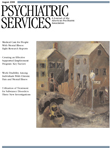Shawn Christopher Shea's book, Improving Medication Adherence: How to Talk With Patients About Their Medications, should be read by every medical student at the end of his or her first year of medical school and again at the end of his or her fourth year. If read anytime after that, I fear it just might be too late.
Shea's book is about how to approach patients sensitively and how to work with patients as partners in their health care. He chooses to focus on medication adherence, but the lessons could be generalized to almost every aspect of the doctor-patient relationship.
The informal style of the book is perhaps taken too far. For example, he talks about "out-of-control schizophrenia" and "nasty side effects." Each chapter begins with a quotation that is generally on point. Some might take issue with the fact that some chapters' quotations are by a nonphysician who is talking about medicating patients.
Shea provides important lessons for the physician starting out in his or her career. He talks about the alliance as "the alliance that helps us to heal when healing is possible and to comfort when it is not." He suggests the importance of building "a collaborative alliance with our patients" such that physician and patients are working together "as allies against their illness." It is because of this belief system that Shea discards the terms "compliance" and "noncompliance." Although the title of his book includes,"medication adherence," the term he prefers is "medication interest." Shea proposes that the term medication interest "emphasizes that the real goal of prescribing clinicians, no matter what their discipline, is to increase understanding and motivation."
Although the author is quite focused on terminology, he sometimes mixes up "effectiveness" and "efficacy." He overstates his case when he indicates that the methodology and verbiage he proposes will "convincingly demonstrate" to patients the physician's intent. He suggests telling patients that a medication can "make sure." Shea offers a too universal approach without stressing enough the necessity for individualization.
Some readers may be put off when Shea becomes maudlin or sentimental. For example, Shea indicates "when our patients or their family members find themselves crying as they face the loss of hope for a cure, the greatest gift we have to offer is simply our own tears." Perhaps it is appropriate that Shea bend over backwards to make the point of doctors connecting with patients since the prevailing forces are in the opposite direction. But should a physician say to a patient "I've had some excellent luck with this medication?" Is what a patient really wants to hear a message founded on the doctor's luck?
Shea could make many improvements in the next edition of Improving Medication Adherence. These style opportunities do not stand in the way of this text's being an extraordinarily useful one for physicians at the beginning of their careers. As I indicated at the start of this review, first-year students and fourth-year students should have this as required reading. Yes, that means medical students would read this book twice. It should then go on their bookshelf to be drawn upon throughout the rest of their career. My fear is that if medical students don't read this before the end of medical school, the synapses that would allow for high-quality doctor-patient interactions will be long fried.

